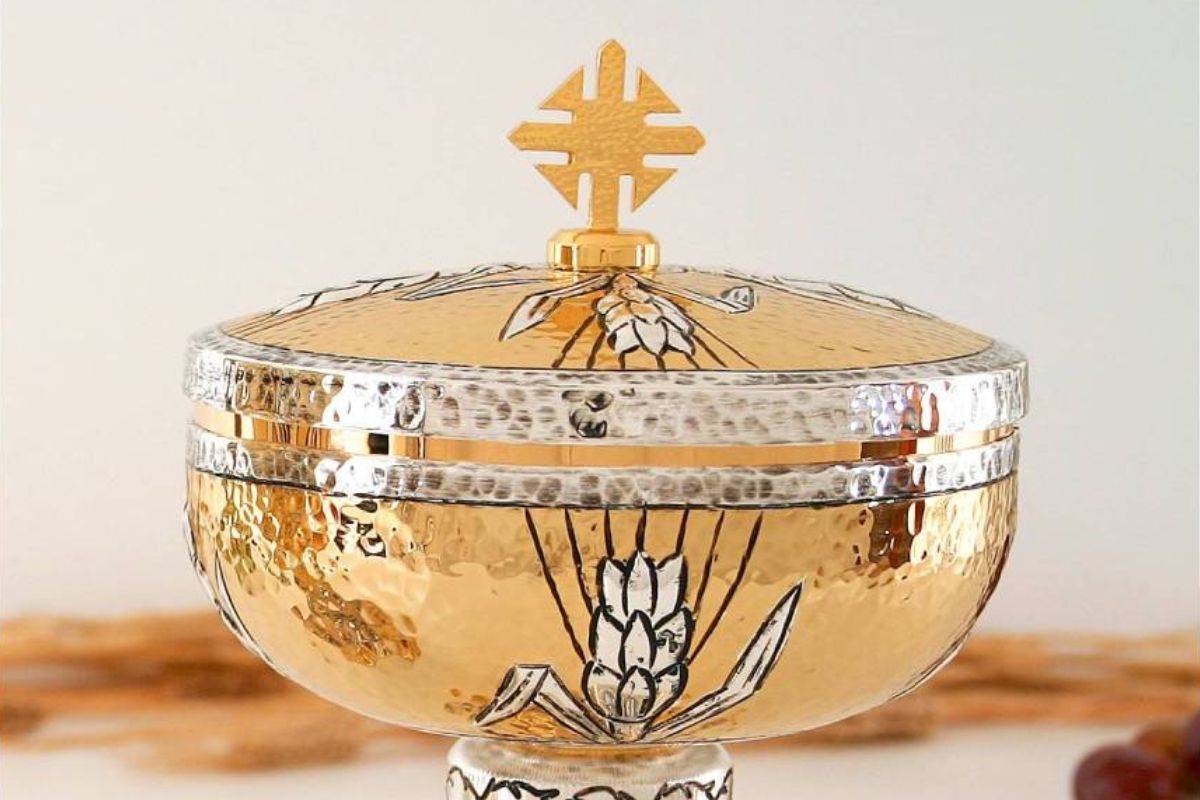
18-03-2024
Culture
Ciborium: different types and uses
The liturgical supply which is the quintessential case for sacred hosts. Here the main types and features of the ciborium.
In the Catholic Church, as well as in many other Christian confessions, ciboria represents a crucial component for the safekeeping of sacred hosts.
Ciborium is also known as pyxis and this second term comes from the Greek (pýxos). This refers to the boxwood, the main material that was originally used to make these early container vessels. Over the time, this liturgical supply evolved. At first, there were tower-shaped pyxis/ciboria, which were later replaced by chalice-shaped sacred vessels with lids on top. A peculiarity of this latter is that it is usually crowned with a cross.
The ciborium, also known as pixis, appears as a valuable vessel, but it goes far beyond aesthetics. We refer to a liturgical supply that has the function of preserving consecrated hosts and which rests inside the tabernacle.
Ciborium is also known as pyxis and this second term comes from the Greek (pýxos). This refers to the boxwood, the main material that was originally used to make these early container vessels. Over the time, this liturgical supply evolved. At first, there were tower-shaped pyxis/ciboria, which were later replaced by chalice-shaped sacred vessels with lids on top. A peculiarity of this latter is that it is usually crowned with a cross.
WHICH AND HOW MANY PYXES EXIST
While it was once common to have wooden pyxes, today those are made of precious metals, such as gold and silver, are preferred, materials that express the dignity and value of the Lord's body. But what are the main types of this liturgical supply?- The tower pyx - a cylindrical-shaped vessel generally made of ivory, wood, bone, metal or boxwood. This is the oldest form.
- The chrismatory pyx - a vessel divided into two parts: a central one that holds the hosts and a lower one where the holy oil is contained.
- The viaticum pyxis - this is a cylindrical or flat model of a vessel that was used to bring the Eucharist to the home of the elderly or sick believer
- The hanging pyx - this is an ancient and distinctive model. A vessel suspended above the altar, the lid of which has a space for the chain for suspension to pass through.
HISTORY OF THE CIBORIUM
Starting from the 9th Century that Pope Leo IV officially regulated the pyx as the only liturgical vessel intended to be the container of the Eucharist. In the sixth Century, after the Council of Trent, priests began to use it as a container for the storage and subsequent distribution of hosts to the faithful.The ciborium, also known as pixis, appears as a valuable vessel, but it goes far beyond aesthetics. We refer to a liturgical supply that has the function of preserving consecrated hosts and which rests inside the tabernacle.
